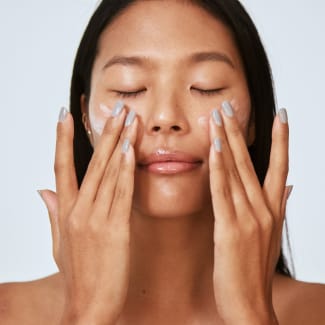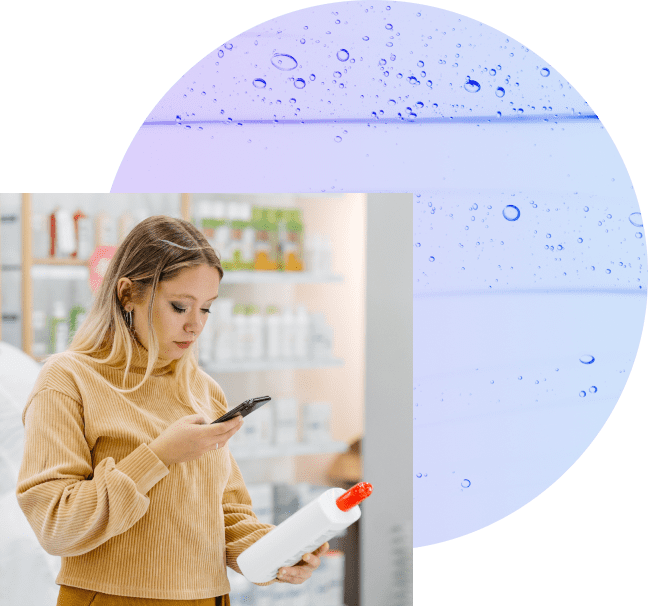Data: Fair
Pumice
- Products with this ingredient are allowed for use in EWG VERIFIED but must meet use restrictions and warnings based on EWG review of company data.
- This ingredient's score is higher if used in products that may not meet industry safety guidelines or U.S. and international government requirements. The score will be lower if used in products that meet these safety guidelines and requirements.
Other Concerns
Enhanced skin absorption and Use restrictions (moderate)SYNONYMS
Restricted
Restricted: EWG VERIFIED products cannot contain this ingredient without adequate substantiation
A substance of volcanic origin consisting chieffly of complex silicates of aluminium and alkali metals
Common concerns
See how this product scores for common concerns.
-
LOWCancer
-
LOWAllergies & Immunotoxicity
-
LOWDevelopmental and Reproductive Toxicity
-
MODERATEUse Restrictions
Ingredient concerns
- CONCERNS
- DATA SOURCES
Products with this Ingredient


| body wash/cleanser | 18 products |
| exfoliant/scrub | 129 products |
| brow liner | 14 products |
| eye liner | 6 products |
| bar soap | 58 products |
| mask | 30 products |
| foot cleansing | 14 products |
| facial cleanser | 10 products |
| facial moisturizer/treatment | 2 products |
| foot moisturizer | 1 products |
| hair styling aid | 1 products |
| around-eye cream | 1 products |
| liquid hand soap | 14 products |
| hand sanitizer | 2 products |
| shampoo | 1 products |
| shaving cream | 1 products |
Organ system toxicity (non-reproductive)


| CONCERN | REFERENCE |
|---|---|
| Classified as not expected to be potentially toxic or harmful | Environment Canada |
Persistence and bioaccumulation


| CONCERN | REFERENCE |
|---|---|
| Not suspected to be bioaccumulative | Environment Canada |
Ecotoxicology


| CONCERN | REFERENCE |
|---|---|
| Not suspected to be an environmental toxin | Environment Canada |
Data gaps


| CONCERN | REFERENCE |
|---|---|
| Risk assessment method deficiencies and data gaps - Maximum reported 'as used' concentration is basis of safety assessment by industry safety panel (Cosmetic Ingredient Review, CIR) - implicit safe concentration limit in product | Cosmetic Ingredient Review (CIR) |
Informational


| CONCERN | REFERENCE |
|---|---|
| Industry or government recommendations for safe use: restrictions on concentration, impurities, product types, or manufacturing methods - any | Cosmetic Ingredient Review (CIR) |
Use restrictions


| CONCERN | REFERENCE |
|---|---|
| Recommended restricted in cosmetics - use, concentration, or manufacturing restrictions - Product type restrictions or differences noted in safety assessment by industry panel | Cosmetic Ingredient Review (CIR) |
Cancer


| CONCERN | REFERENCE |
|---|---|
| Cancer - limited evidence | Use of Underarm Cosmetic Products in Relation to Risk of Breast Cancer: A Case-Control Study(2017-07-01) |
| One or more animal studies show tumor formation at high doses | Aluminium chloride promotes tumorigenesis and metastasis in normal murine mammary gland epithelial cells(2016-12-01) |
| Not likely to be carcinogenic in humans | Antiperspirant use as a risk factor for breast cancer in Iraq(2006-05-01) |
| Cancer - limited evidence | An earlier age of breast cancer diagnosis related to more frequent use of antiperspirants/deodorants and underarm shaving(2003-12-01) |
| Not likely to be carcinogenic in humans | Antiperspirant use and the risk of breast cancer(2002-10-01) |
- Environment Canada
- Cosmetic Ingredient Review (CIR)
- Use of Underarm Cosmetic Products in Relation to Risk of Breast Cancer: A Case-Control Study(2017-07-01)
- Aluminium chloride promotes tumorigenesis and metastasis in normal murine mammary gland epithelial cells(2016-12-01)
- Antiperspirant use as a risk factor for breast cancer in Iraq(2006-05-01)
- An earlier age of breast cancer diagnosis related to more frequent use of antiperspirants/deodorants and underarm shaving(2003-12-01)
- Antiperspirant use and the risk of breast cancer(2002-10-01)
Understanding scores
Cosmetics and personal care products are not required to be tested for safety before being allowed on the market. The Skin Deep® scoring system was designed to help the public understand whether a product is safe to use or whether it contains ingredients of concern.
Every product and ingredient in Skin Deep gets a two-part score – one for hazard and one for data availability. The safest products score well by both measures, with a low hazard rating and a fair or better data availability rating.
HOW WE DETERMINE SCORES
Hazard score
The Skin Deep ingredient hazard score, from 1 to 10, reflects known and suspected hazards linked to the ingredients. The EWG Verified® mark means a product meets EWG’s strictest criteria for transparency and health.
Data availability
The Skin Deep data availability rating reflects the number of scientific studies about the product or ingredient in the published scientific literature.











